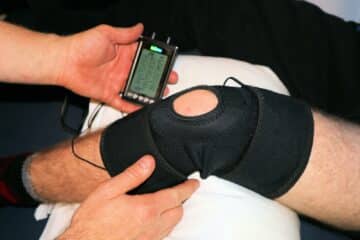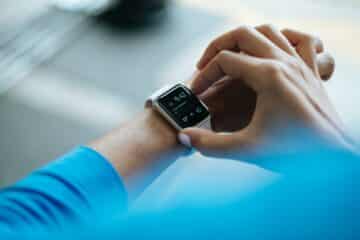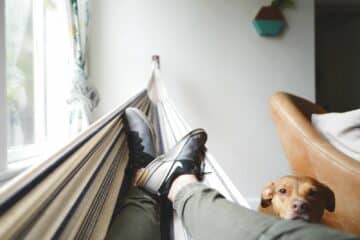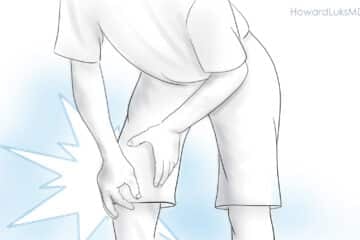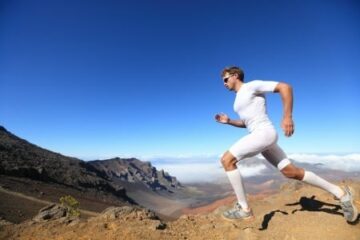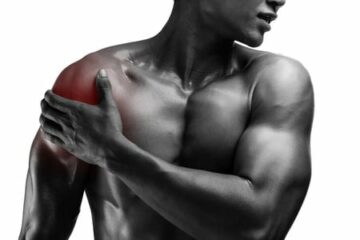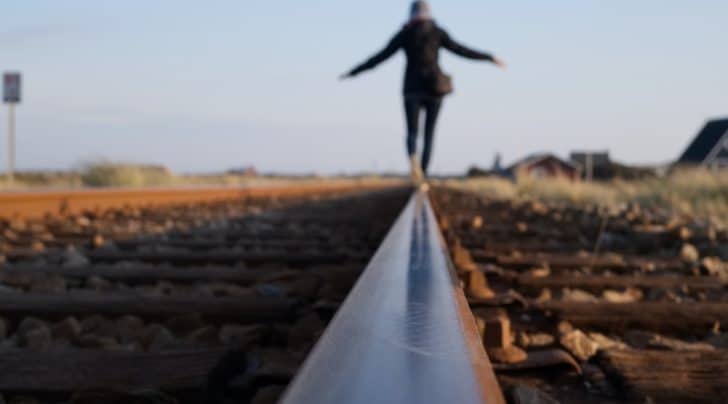
Show Notes
Paul and Howard talk about balancing, but not the financial kind.
Topics:
- How we balance
- Why balance is overlooked but so important to health and fitness
- Why falls are so common and so hard on people as we age
- Myths about balancing
- How to improve your balance
Readings:
- Resistance and balance exercise to live longer and healthier
- Balance exercises
Music:
“Crossing the Chasm” by Kevin MacLeod (incompetech.com) licensed under Creative Commons: By Attribution 3.0
Disclaimers apply (at the end of the episode).
About The Show
Simplavida is about smart services and tools for simplifying longevity. Its co-founders are Dr. Paul Kedrosky and Howard Luks M.D.
Paul Kedrosky is a frequently injured athlete and a venture capitalist. Howard Luks is a top sports orthopedic surgeon. Smart, candid, and experienced analysis, ideas and tips about health, fitness, and longevity from two athletes and sports orthopedic surgeon—and guests.
Listen & Follow
Transcript
[00:00:00]Paul: [00:00:17] Put someone on cross country skis, And they look like Bambi on ice, they just boom. They’re down,
Howard: [00:00:24] it’s a death by a thousand cuts or, death by 20 falls Paul: [00:00:29] we’re both interested in balance because of the way it changes over time and how important it is as an athlete and as anyone just trying to be active and alive.
Howard: [00:00:38] Absolutely. I mean, balance is so overlooked in terms of our overall health. even for young folks, and improvement in balance will correlate with an improvement in performance.
Paul: [00:00:51] so, and this is maybe ridiculous question, but. Well, how if someone says to you, I think I’m having balance problems [00:01:00] other than asking them what they mean by that. What do you think PIP people, what do you think people mean when they say, I’m worried about my balance or I’m having trouble with my balance? I mean, I know what I mean. I mean that I’ve tried to do something stupid that I haven’t trained enough for and I fell so, but what? What? What a normal humans mean, do you
Howard: [00:01:18] we’ll discuss balance because far too many people think that a good exercise program is walking. and so I try to stress resistance and balance and what that balance is important. And then when I bring up the fact with that, they’re probably catching their toes more often, or when. Lose their balance when they first stand up or change directions. They’ll agree and they’ll understand. And then the light bulb moment will occur,
Paul: [00:01:47] yeah. Yeah. No, I mean, I hear from people who in particular, people who are taking up, an exercise program for the first time. They’ll say, I, I’m nervous about, I dunno, running because I might fall or I’m nervous about [00:02:00] skiing. When don’t, which is a sport I love you do as well. And they’ll say, well, I’m nervous because I might fall. So this topic is, I suppose of balance gets embedded in a lot of other things, like people’s fear of falling right.
Howard: [00:02:12] Absolutely. when you are a better athlete, and hit certain performance metrics, you are proven to have. That are balanced and control. and as we get better at any chosen sport or activity, our balance will innately, IM improve. and that will in turn build confidence.
Paul: [00:02:34] Yeah.
Howard: [00:02:35] no one’s going to start from a position of high balance and control in a certain activity without pre, previously training in that activity.
Paul: [00:02:47] I used to teach skiing and when I’m trying to describe to someone what I mean when I say, well, we’ll often look at someone else and I’ll say, you see what they’re doing. And people have a tendency to get hung up on where that person’s arms are, how far [00:03:00] apart their legs are. And these are all useful things to notice. But the main thing I’ve, if I look at what I’m looking at, if you know what I mean, it’s in a medicines, the main thing I’m looking at is their balance. I see how they’re positioned over their skis. I see how easy they make it look when they hit sort of discontinuity is in the slope, whether it’s a bump or they go off a jump. Who watched someone go off a small jump and land really neat and tidy, and there’s no waving of your arms. The poles go flying in the air like old time TV, aerials. None of that stuff happens, and that’s all that’s all balanced, but it’s the thing that I think in many ways people miss because they get so hung up on almost it almost every activity they get hung up on the technicalities of. It should it should I be breathing in or out whenever I hit a golf ball, should I have my hands high or low? And then skiing down a slope. And so many of these activities really hinge on how well you can balance.
Howard: [00:03:51] Sure. It’s back to the basics. and, and the fun. The metals, it’s a base of support. which is why we see if a [00:04:00] soccer player jumps in the air to celebrate scoring a goal, you’ll see them land with a wide base of support. And because we’re a By Peatal and we stand up. The lower our center of gravity is, the more stable we are. So not only do you see a soccer player land with a wide base of support, the legs are spread apart, but they’re often, in a bent knee position. So they have a lower center of gravity, which is going to improve their balance.
Paul: [00:04:32] I was reading somewhere about, I forget which club it was at some club, one of the premier league clubs was trying to convince the players not to do knee slides. This is just related and not necessarily because of why they’re there. The breadth of their their knee position, but because of a fear of meniscus and ACL problems that suddenly something horrific would happen if you send a 200 pound man sprinting down a field and he’s sliding across wet grass, hit dry grass, and who knows what happens
Howard: [00:04:58] Actually, I think it’s the [00:05:00] unpredictability of what that limb is doing when it’s stuck onto you. That’s the problem.
Paul: [00:05:06] think one of the reasons, and I know this is personal for me because we, I had a relative who, who died this summer from a fall at, which got me thinking a lot about balance in particular, balance in the context of, of aging. You think about someone dying after a fall, especially as a young person, someone says it to you, you think, Oh, they must have fallen off a ladder or maybe off the house. Or it’s possible it was skydiving, but I mean, most times. When its age-related falls, whichever really remarkably high mortality compared to the same fall from someone much younger. It has nothing to do with falling from Heights. Right? I mean, it has to do with, there’s even a word for it. I think I’ve forgotten what it is, but ground falls, I think it’s called the ground level falls. Right? That’s, that’s really the fear about balancing as you’re getting older.
Howard: [00:05:49] Absolutely. these older folks, tend to simply trip on a rug, any change in their activity, their direction. [00:06:00] an object that they’re not aware of. and, and even ground a crack in the sidewalk and don’t even brick or paver out on the patio. consent. Someone with. Poor balance down to the ground. You combine that with osteoporosis, and poor muscle covering, and a little bit of muscle wasting and atrophy, and you’re set up for a significant issue.
Paul: [00:06:26] Yeah, the study, the study that I saw, which was I think from around 2014 or 15 I think it was a one and a half percent versus four and a half percent in terms of the likelihood, sort of mortality after a ground fall. It was roughly a tripling, again, small numbers. It’s not as if every older person who falls. We have a tendency to dramatize these things, or they fell. Oh my goodness. Right. But it’s not so much that it’s, it’s that every older person who falls is immediately at risk. It’s more that there’s a dramatic increase in the risk associated with ground falls with a [00:07:00] teenager versus someone a senior or someone older.
Howard: [00:07:03] Sure. and we need to look at it from a cumulative issue as well, which is a lot harder to study. Because we take a typical elderly person and they fall, and they recover. But they’ve been now, now been less active for two weeks, so they never quite make it back to the baseline where they were at before their, last fall. Now, they’re moving along and they have another fall. and they lose a little bit more, and the lack of rehabilitation and exercise and activity leads to worsening of their muscle strength, worsening of the balance and proprioception, and they have another fall. And so, it’s a death by a thousand cuts or, death by 20 falls, as opposed to one specific incident.
Paul: [00:07:56] Right. I think that’s, that’s the right way to put it. It feels like it’s cumulative. [00:08:00] So the reasons why, just to be explicit, why tends to get worse with age. It’s all about this. With this cumulative problem. It’s also about maybe being less active and more sedentary leads to, you’re not challenging the muscles that fire and support balance a as often or as, or as aggressively, I suppose. Is that fair to say?
Howard: [00:08:20] Sure. you know. We have issues with balance for various reasons. When we think about balance, we, we talk about a static, steady state, you’re standing still proactive balance or you’re moving. So you have to adjust your center of gravity to cope with that motion. And then reactive balance where there’s going to be that crack in the sidewalk, or perturbation in your movement pattern. and as we age, our neuromuscular control, how our brain, senses the signals of the afferent signals [00:09:00] it receives. From a, the periphery changes and slows the parent or the motor control of our muscles, SLOs. and the muscle itself changes. As we’ve discussed, we have issues with atrophy or loss of muscle mass that comes with age no matter what you do. If you’re not exercising, no matter how well you eat, you are losing 1% of your muscle mass per year, starting at the age of 40. And that’s accompanied by anywhere from a two and a half to 4% loss of power and strength in that muscle. so if you lose the ability. To, let’s say dorsi flex your ankle, which is pull your toe up towards your knee. you’re going to catch your feet more often. So here’s a weakness pattern that is going to lead to, an issue with [00:10:00] reactive balance. you could also just have weakness in your perinatal muscles, which are stabilizing muscle for the ankle to be Oh, stereo. Also stabilizing muscle for the ankle. and the weaker that these muscles are, the less apt that someone is going to be able to balance themselves out of a reactive change.
Paul: [00:10:25] And what did, we can come back to this sport in the end when we talk about things people can do, but one of the misconceptions I feel like many people had, myself included for a long time. If I think back to my initial . M set strengthening, such as they were, they tended to be in a very linear form. So, , if you remember the old, Nautilus machines and the those, those straight line motion engineered machines for resistance. And I had someone point out to me once that they’re better than nothing, but not much better than nothing in part because. None of the stabilizing muscles around the [00:11:00] joints are actually being used because you’re, you’re stuck in a very fixed motion, whether it’s on whatever plane it’s on, and as a result, you get this distorted sense of what you’ve, what you’ve accomplished in terms of fit and fitness for use as opposed to fitness for, I don’t know, going to the beach.
Howard: [00:11:18] Yes. when I discuss workout patterns and techniques. With people in my office. it’s almost always with some form of freeway. Yes. Certain that certain exercises you do need a machine. however, it’s very important to have that fine motor control of the accessory muscles, which are not necessarily the muscle that you’re concentrating on strengthening. But as you noted, all the other supporting muscles. For having them fire and be active is extraordinarily important. when we think of balance and [00:12:00] strength
Paul: [00:12:02] it’s still important to know How all of this stuff works and maybe the way to back into it. Yeah. How it’s not just muscles, it’s, it’s, there’s a lot of misconceptions about bounce. When you hear people talking about bounce, so often it turns into a discussion about their inner ear as if the muscles aren’t involved or they talk about muscles as if the inner ear isn’t involved or they talk about neither of those. And it’s really just about, when back whenever the minimalist running movement was getting going, you got the impression. Balance was really all about my ability to really feel the ground that I’m running on. It was about this proprioception challenged that I was feeling, and in a weird way, it’s the blind men in the elephant problem that all of these things play into balance right.
Howard: [00:12:41] Yes. It’s all quite complicated, the inner ear, for example. As these very, fine hair cells. and there are those that are vertically oriented and those that are more horizontally oriented. So if you’ve ever been [00:13:00] sick or, or. Had a cold and you get up and you’re a little, a little dizzy when you first start moving, it’s likely due to inflammation in the inner ear. And there’s lots of disease States that can affect that and give people people, vertigo, et cetera. So in their proper inner ear function is certainly satchel, for, for proper balance.
Paul: [00:13:25] not, it alone is the key. Right? I mean, that’s the thing that I
Howard: [00:13:28] You’re absolutely correct. it takes the coordination of our muscles, and that relies on neuromuscular control. So we actually have to teach our brain how to receive signals. From our muscles and then how to send signals back to our muscles. That’s why we become more coordinated, and why our balance improves and things seem more effortless as we practice, and get [00:14:00] better at a certain task. we have. Other forms of, afferent input such as our skin. You know, sneakers and shoe wear, weren’t, weren’t necessarily all that friendly to humans. You know. Well, onions and, lots of other foot issues and causes of foot, a foot deformity and pain. A really an issue associated with shoe wear populations and stuffing our feet inside the, you know, these leather boxes. or. Slamming them into shoes that we shouldn’t even try to fit into. but, you know, we, we need to turn our focus back to our feet and trying to stay out of our shoes, you know, as much as, as possible and work on our foot flexibility and foot. Adaptability to certain situations, to work on our appropriate [00:15:00] septic sense and our balance And
Paul: [00:15:02] right and get
Howard: [00:15:03] you know, go ahead.
Paul: [00:15:04] well, just to get away from the idea that it’s somehow monocausal, right? That it’s all of these things working in conjunction. And as a matter of fact, even if you had perfect balance and great muscular control firing, if you can’t sense the environment around you through all of the other senses, including your skin and contact everything else, that it’s still not going to work out.
Howard: [00:15:23] Yes, you hundred percent correct. We are well-coordinated, very complex machines and our brain receives inputs from everywhere.
Paul: [00:15:34] I got to fight with you though. This is a sentence I don’t use a lot, but I got in a fight with, what’s the right word here at otolaryngologist about this recently? w I’m not sure people do that regularly, but I did Devon, and he was try, we was, I was in, because I’ve seen this, this, this, era guy and he, he’s wanted me to try this exercise where I would close my eyes and March across the office, so I had to do high leg. Lifts and then walk across the office. And then he told me to open my [00:16:00] eyes again. And then as I did that, I found out that I hadn’t walked straight across the office like I thought I had. I had actually done about a 90 degree turn and was facing his, his, his cabinets. And he triumphantly said, this demonstrates it, that you have an ear problem and there’s probably a balance issue and you should be careful. And I said, that’s just the most complete nonsense I’ve heard in some time. And I said, it’s not the way balanced in your sense of locomotion works as a human eye. There are, I suppose, over time, could I learn how to walk straight while blindfolded? I bet. But as someone who relies on a whole host of senses to, to move across space, how am I set up today? That if you, if you blind, if you blindfold me and send me marching across the room, can I guarantee I won’t hit your medicine cabinet? No. It, but it
Howard: [00:16:49] I would end up, yeah. Much the same position. I have no doubt, and I don’t think I have an issue with my inner ear. but obviously I’m not an ENT [00:17:00] surgeon, so I’m not gonna have that argument. but right now my vision is critical. To my proprioceptive abilities. And, you know, I do train my balance and whenever I close my eyes, my abilities diminish dramatically.
Paul: [00:17:17] right. right. And even if, especially if you’re marching in a, an old LeBron geologists office under challenge, it’s like, this is just way too many things at once. so before talk about how to, how to. Optimize or improve balance and, and maybe put off some of these effects over time. What are some of the things that you think people misunderstand about balance? And I’ll, I’ll start, I hear this all the time, is I’ll, I’ll be explaining, and I used to explain this as a ski instructor, I’ll say to someone, look at their bounds, look at a, well, and I taught cross country skiing for awhile, which is even more balanced centric in many ways because people are sliding around on these skis. And as soon as you Put someone on cross country skis, they look like Bambi on ice, right? They just boom. Straight up, they’re gone. They’re down, and, [00:18:00] and that you tried to explain to them, this is who you need to work on this and here’s what you need to work on. They said, I just can’t do it. I don’t have balance. And people act as if it’s something innate gift, like handedness or Brown eyes or something else. It’s just not the case. It’s, it’s, it’s this whole neuromuscular control leading from, here’s a challenge. Here’s something I need to do in the brain needs time and beta to sort out how to respond to it.
Howard: [00:18:27] be surprised if you handed them a basketball and they’ve never shot. Basketball before and they can’t get it in the hoop, and they would accept the fact that they would need to practice if their goal is to successfully shoot that basket in a hoop. Yet somehow they don’t think about balance in the same way. They don’t think that it’s something that they need to train a something to improve that, in order to. To facilitate their ability to [00:19:00] enter into the sports realm that they’re not comfortable with.
Paul: [00:19:04] It’s, it’s really remarkable, and I see it all the time. I mean, I see it across what I used to teach, skiing. I teach, I see it whenever I spend time with friends or mountain biking. It’s a, I get nonstop. It’s all about balance, balance, balance, balance. You have good balance. I don’t have good balance and it’s, again, it’s like you say, it’s the basketball example is spot on. The other thing I get in terms of misunderstandings about balance that really interesting is that kids can balance adults can, and the vice versa. The reverse version of that is that if you then say, no, you just haven’t had enough crack this, I’ll get this crazy response back. That while practicing balancing is childish, I look ridiculous.
Howard: [00:19:40] Yeah. It is very hard to convince people that is really important.
Paul: [00:19:44] And at the end that it’s not in that it’s not something that only CI people under the kids under the age of 12 have that somehow it all just goes away. I just, I, I’m lucky I can even stand on a sidewalk anymore,
Howard: [00:19:57] Right? You know, it’s not a problem that they’re [00:20:00] having now, so it’s not an issue that is soon salient and certain, and so if it’s not, then, then people are not going to. Respond to the need to practice it. so if I’m dealing with an elite athlete or a trail runner, especially running on, you know, East coast trials, right? Where everything’s a rock and a root and something else that’s trying to grab your shoe. I have a lot of trouble trying to convince people how important it
Paul: [00:20:31] Well, I’m, I’m living testimony to that problem, but I’m sure I don’t, I don’t think, I feel like I’m solvable. But, so let’s talk a little bit about this. So that if we’ve decided it’s, it’s important, it’s not childish, it’s something you can work on, not born with. It’s not handedness. It’s not, I color it. What are some of your favorite. I don’t know. Drills, exercises, ideas, at least to get people thinking about how they can, things people can do to work on proprioception and balance.
Howard: [00:20:58] So it starts very [00:21:00] simply, a static balance is really important. Yeah. And it’s very easy to realize how bad you are if you just stand still and Ben one leg up in front of you and try to stay in that position for 30 seconds. okay. Most people, if they’re not practiced, will not be able to do it. and so I start people with that simple, static exercise. then I have them, straighten their knee out so their foot is. Further away. So when you think about balance, again as basis support and center of gravity, so we’re, we’re changing their base base of support in their center of gravity by moving the foot further away. then I have them swing their foot around to the back and I have it, have them flex their knee behind them. and
Paul: [00:21:51] what’s that? What’s that doing? What’s that in your mind? What is that doing
Howard: [00:21:58] is it’s throwing. So [00:22:00] when they’re standing statically, it’s testing, the con, the afferent. Nerve input from your foot to your brain, and then the E Ferrant output of the brain to the foot to fire all these fine little muscles to keep your foot stable and keep you standing over it. there’s also, there’s also muscles in your back. Pelvis that will need to fire, and then your spine, so that you maintain and a straight up posture. You know, if you think about a space movie that you’ve seen, and when you’re seeing a scene on the outside of the spacecraft, you always seeing those little jets fire for,
Paul: [00:22:50] Right. Hi, had I use that man, I use that mental model. I’d say that’s one that really appeals
Howard: [00:22:54] It’s really, it works really. Wow. so your little muscles [00:23:00] in and around your foot and ankle are like those jets and they’re going to fire in intermittently to keep you standing. That’s why after 30 or 40 seconds, a lot of people actually find it exhausting. You’re tiring these muscles out cause they’re not used to doing a lot of work.
Paul: [00:23:21] Right. Because they’ve not had to, they’ve not been challenged in that way. Right.
Howard: [00:23:24] Correct. with younger people, I then start to perturb the system. So for example, for my kids who play soccer, I have them stand on a single leg as a base of support and I’ll move around them and I’ll push them from certain directions. You know, short little shoves and you know, they have to, to respond. This is a reactive form of stability, that we tend to do a lot of in ACL surgery recovery, but I’m trying to do it to avoid an [00:24:00] ACL injury in my children so we can change the walking surface. and these should not be done in a shoe or a sneaker. These should be done on a, on a hard state. Stable floor when you first start, then soft carpet, then it can be on an uneven surface. I have a wood plank about 12 feet long. It has a. Curved radius and we walk on it. and it just helps us, create that dynamic balance as well. And I can’t tell you how much it has improved, So many aspects of the sports that I choose to PR to, to pursue. The first time that I went, stand up paddle boarding, I was ridiculous. You know, granted, it wasn’t an ocean, but I was falling down every 16 seconds. Now I can almost ride waves on a standup [00:25:00] paddleboard. And I owe it all to this balance training. And also I owe it to the fact that it is an activity that you can train to be better at.
Paul: [00:25:11] And you can train to be better at. People I find have this bad habit of thinking, well, I’ll work on that when I met the gym, or I’ll work on that the next time I’m skiing. The opportunities for working on balance are non nonstop, as long as you don’t mind intermittently looking a little bit ridiculous. Like I love finding something. If you’re out for a run, I’ll literally leap up on a, on a rock and stands on one leg for a little while just because. Peter, Brian. I mean, it’s, it’s, it’s, it’s actually fun saying, if you can arrest your momentum and hold yourself there for a little while and then continue onward. But P I find people, they, they compartmentalize things so badly that I’m now in the mode where I’m running or I’m now in the mode where I’m lifting and balanced is part of all of those things. And I’m constantly surprised more people don’t try to smuggle it into every one of those activities.
Howard: [00:25:59] Yeah, [00:26:00] I, I don’t know if I’m ready to take it out in public on an, on a running trail, but, I, I, but I have, heard my kids’ friends come commenting or asking why your dad is standing there with his leg in the air while he’s watching the television.
Paul: [00:26:19] Yeah. It starts to seem very kill bill David Caradigm. Right. We don’t, don’t say anything. Don’t say anything to dad. He might be a Kung Fu master. so. But the point is that there are activities people can do. You can, you can do them without going to gyms. It’s hugely important and most of our ideas about balance that it’s somehow either innate or or tied to your inner ear are all wrong.
Howard: [00:26:46] Correct. it can’t be overstated. One of the reasons why we’ve started this is the fact that we’re looking to adopt strategies to [00:27:00] optimize our health at this time and our longevity. You know, we’re both Mitt. Middle aged runners were very active and we plan on staying that way, and that means that we need to eat well. we need to sleep well. We need to exercise. And exercise involves aerobic exercise resistance exercise. Balance exercise and occasionally a high intensity exercise. And we cannot overlook how important balance is, especially if we’re going to plan on staying active while while running trails and the time to focus on it is not when you’re falling down every other day because your balance is so poor. It’s to work on it now so that we don’t run into a problem with it.
Paul: [00:27:56] No, that’s it. balance for life. Well, that’s a great note to end on. So let’s, let’s stop here. Thanks, Howard.
Howard: [00:28:00] Okay. Paul



